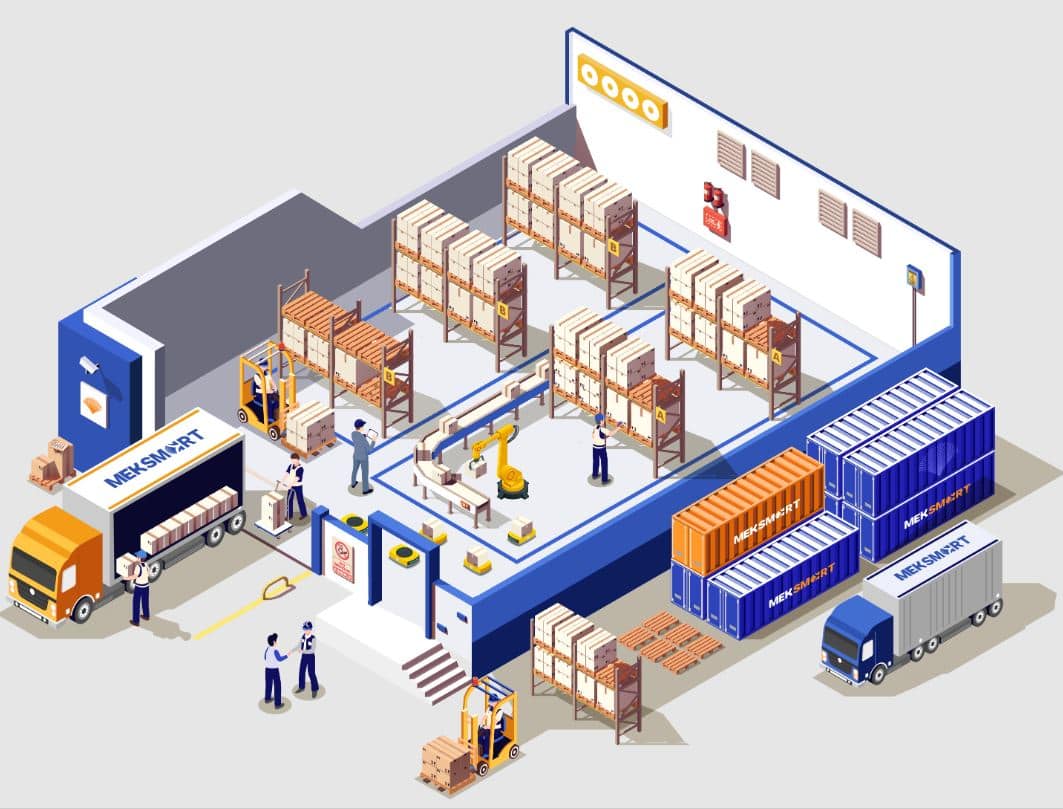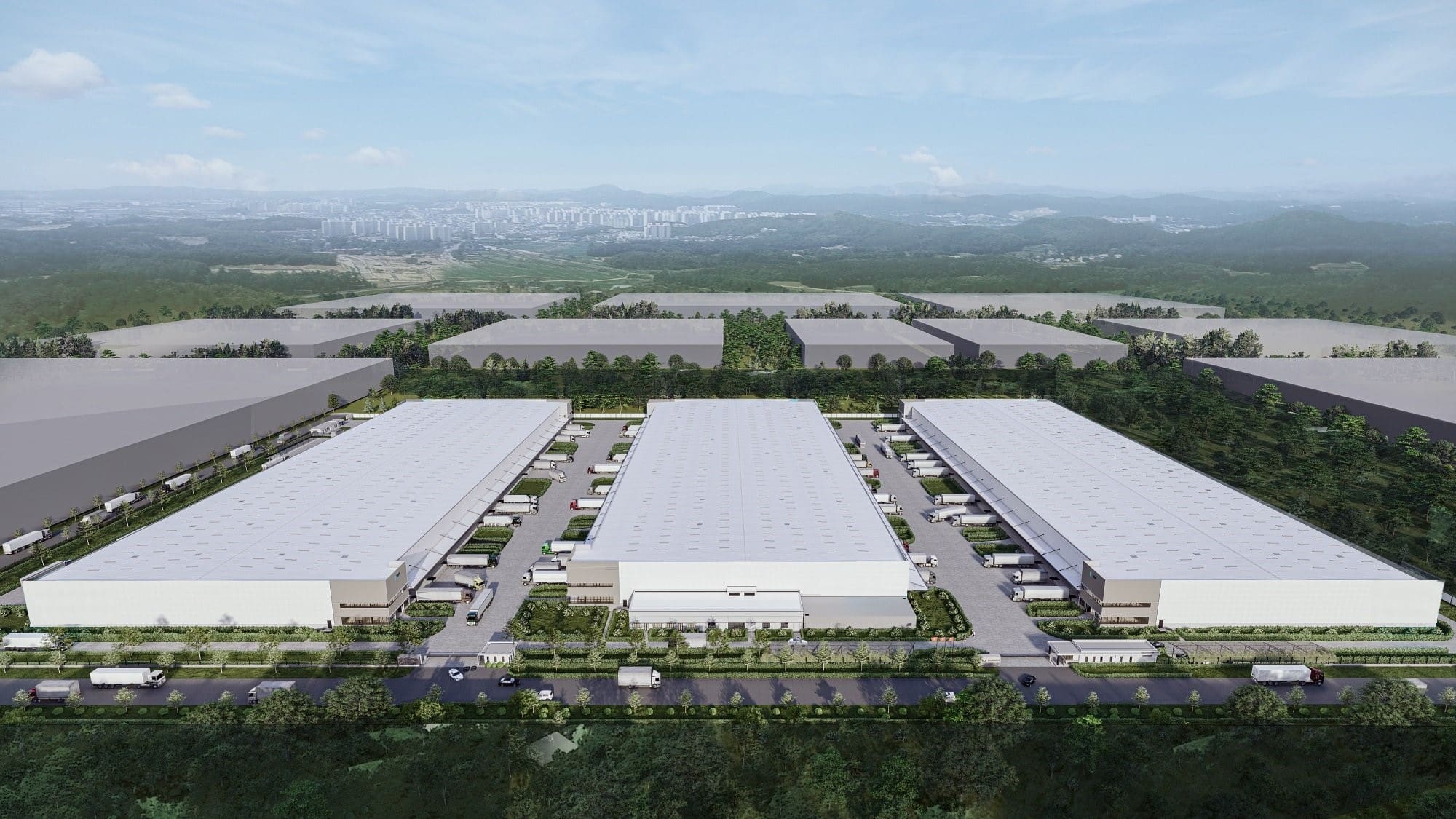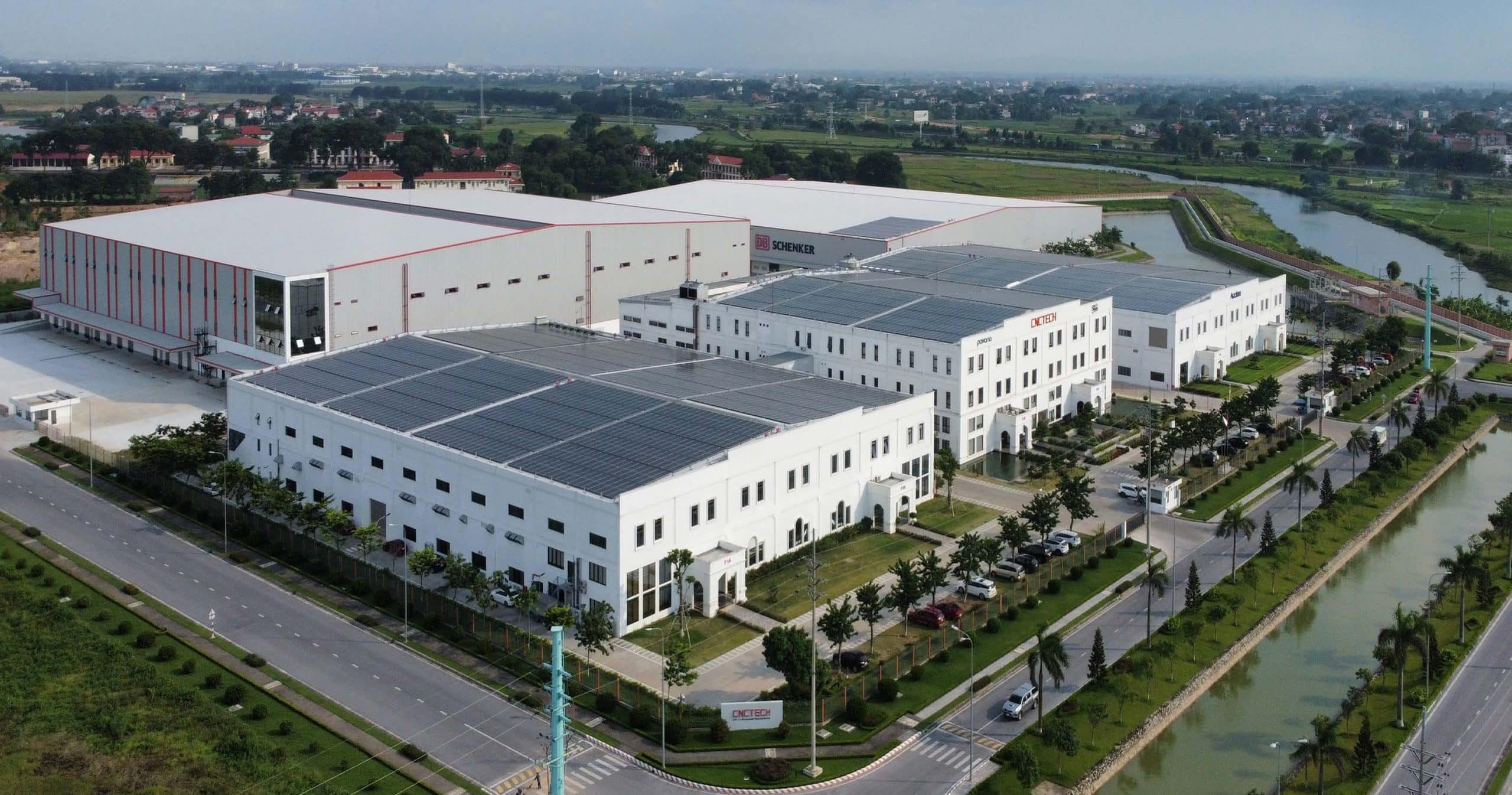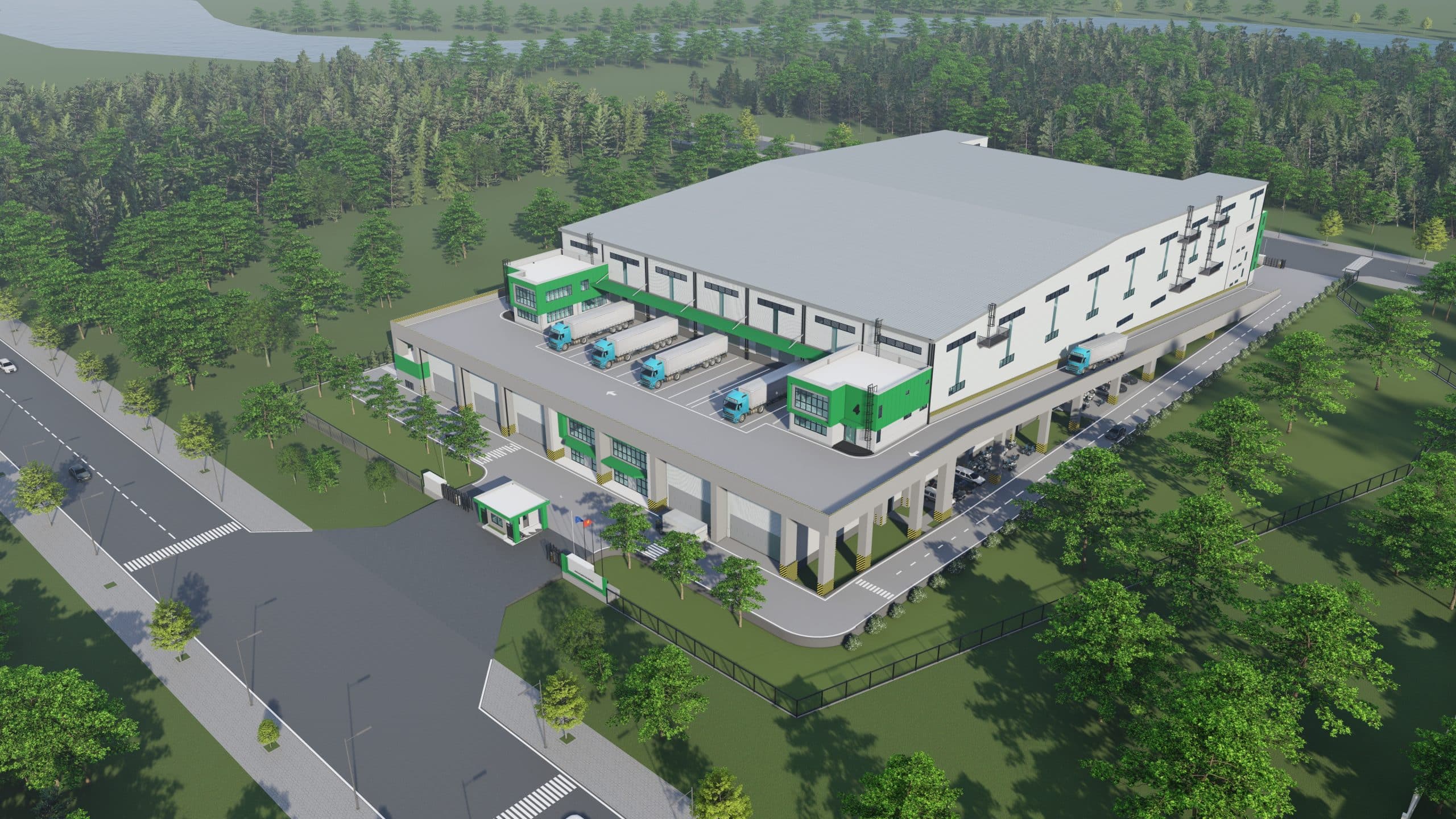
Northern Viet Nam has become a top destination for manufacturing enterprises, driven by a rapidly expanding network of industrial parks and well-developed, synchronised transport infrastructure. Major expressways such as Noi Bai – Lao Cai, Ha Noi – Hai Phong – Quang Ninh, Ring Roads 3 and 4, along with international seaports and airports, provide ideal conditions for goods circulation and supply chain optimisation.
As the demand for faster handling, cost-saving operations, and reduced warehousing time continues to grow, many FDI enterprises and 3PL providers have started integrating the Cross-docking model into their supply chains, especially in major logistics hubs such as Bac Ninh, Hung Yen, and Hai Phong. Leading industrial real estate developers like SLP, Frasers Property, BWID, and CNCTech have also invested in logistics centres with direct-transfer capabilities in this area, highlighting the model’s emergence as a suitable solution aligned with modern logistics trends.
It is a modern distribution model in which long-term storage is eliminated. Upon arrival at the distribution centre, goods are inspected, sorted, and immediately transferred to outbound transport without going through extended warehousing. The goal is to shorten processing time and reduce logistics costs.
To operate efficiently, this model requires tight synchronisation between inbound and outbound flows, precise transport planning and labour coordination, as well as transparent, real-time order data updates.
Currently, this direct transfer process is deployed in various forms, tailored to specific operational objectives:
– Manufacturing Application: Aggregates materials/components from multiple suppliers and ships them directly to manufacturing lines.
– Distributor Model: Receives goods from multiple sources, sorts them by order, and dispatches them immediately upon completion.
– Transportation-based method: Combines shipments from different carriers to optimise route planning and delivery costs.
– Retail version: Accepts goods from multiple suppliers and distributes them directly to retail stores.
– Opportunistic transfer: Flexibly applied within the warehouse, allowing direct transfer from receiving to shipping zones based on specific needs.
Basic workflow:
This process requires accurate coordination among operational teams, efficient order management systems, and real-time data to ensure continuous, uninterrupted goods flow.
Types of goods suitable for Flow-through Logistics:
– Fast-moving, short shelf-life, or perishable items: such as fresh food, pharmaceuticals, seasonal products
– High-quality, pre-certified goods: not requiring additional inspection during transfer
– Fully packaged and labelled items: ready for delivery without further handling
– Promotional goods, new launches, or best-selling products: requiring rapid market distribution during peak demand
Compared to the traditional warehousing model, this method offers several clear advantages:
– Reduced storage costs: Goods are not held in long-term storage but transferred immediately, helping businesses significantly cut warehousing and preservation expenses. This is especially beneficial for items with short shelf lives or urgent delivery needs.
– Faster delivery time: By removing the storage step, the time from receiving to shipping can be shortened to one or two days – significantly faster than conventional handling timelines.
– Optimised operations: Simplified logistics processes reduce the number of handling steps, minimise backlogs, and improve resource allocation (personnel, vehicles, budget).
Meanwhile, the traditional warehousing model often involves multiple compulsory steps such as receiving, storing, picking, and shipping – leading to longer handling times, higher costs, and reduced suitability for time-sensitive products.
Northern Viet Nam brings together all the necessary conditions to lead adoption in the region: from large-scale manufacturing ecosystems and well-connected infrastructure to rising demand for high-speed, modern logistics. In a context where cost efficiency and delivery speed are key competitive factors, adopting this method brings strategic advantages for manufacturers, distributors, and logistics operators.
To implement this model successfully, selecting the right warehouse facility is a crucial factor. A Cross-docking distribution centre should meet specific operational and technical requirements, including:
– Strategic location: Close to expressways, ports, airports, or major logistics nodes to optimize inbound – outbound movement.
– Optimised layout design: A flow-through or I/H-shaped layout to support continuous goods flow and minimize intermediate handling.
– Sufficient number and proper placement of dock doors: Supporting simultaneous inbound and outbound processing.
– High ceiling clearance and open space: Ensuring efficient handling of goods despite the lack of long-term storage.
– Scalability and automation readiness: Enabling future expansion or integration of technologies such as conveyors and sorting robots.
With superior infrastructure, the following projects are ideal locations to implement a cross-docking model in Northern Viet Nam.
Strategically located within Yen Phong Industrial Park – one of the key industrial zones in Northern Viet Nam, SBN-W29 offers high-quality ready-built factory solutions, enabling businesses to swiftly expand manufacturing operations and optimise their supply chain.
Key features:
– Large available space, suitable for a wide range of manufacturing and commercial industries.
– Modern design with solid structure and high clear height, ideal for machinery installation and goods storage.
– Fully completed technical infrastructure with ready connections to power, water, and telecommunications.
– Fire protection system compliant with Vietnamese standards (TCVN).
– Excellent connectivity to major infrastructure including Noi Bai Airport, central Ha Noi, key expressways and seaports in the North.

Situated in Bac Giang, adjacent to major expressways connecting Northern Viet Nam’s economic hubs, SBG-W66 delivers high-quality ready-built warehouse solutions tailored for both manufacturing businesses and third-party logistics providers.
Key features:
– Flexible leasing areas to accommodate various operational scales.
– High clearance and heavy floor load capacity, optimised for storage and logistics activities.
– Integrated infrastructure including bonded warehouses, cold storage, CFS, ICD, and container yard.
– One-stop logistics services covering customs, transportation, and distribution at a single hub.
– 24/7 security and international-standard fire protection system.
– Strategic access to key transport nodes including expressways, airports, and seaports.

The SVP-FW46 project provides a prime location in Binh Xuyen – one of the economic centers linking Ha Noi with the Northeastern region. It is an ideal choice for businesses seeking flexible manufacturing or transit space, combining both ready-built and built-to-suit models.
Key features:
– A mix of ready-built and build-to-suit factory options tailored to business requirements.
– Integrated amenities including logistics services, commercial facilities, and accommodation for workers and specialists.
– “One-stop” service model supporting legal procedures through to operational setup, allowing businesses to launch quickly and efficiently.
– Convenient access to expressways, airports, and ports – ideal for import/export activities.

With the advantage of being situated in a free trade zone, the SHP-FW65 project offers versatile options for businesses looking to expand manufacturing or storage, featuring a two-storey layout that maximises floor area and optimises logistics operations.
Key features:
– Contemporary two-storey layout optimised for both production and transshipment.
– Backed by a reputable Singaporean developer with a strong track record across Vietnam.
– Fully equipped with essential facilities including comprehensive fire protection, modern dock levellers, and energy-efficient lighting.
– Attractive tax incentives available due to the bonded zone location.
– Exceptional connectivity to administrative centres, international airports, and major seaports in the region.

As a leading industrial real estate consultancy, Savills Industrial is committed to supporting businesses in:
– Advising on infrastructure selection tailored for Cross-docking implementation aligned with your business model.
– Recommending warehouse locations with strategic positioning and optimal specifications.
Cross-docking is not only a cutting-edge logistics solution but also a powerful lever to enhance competitiveness and stay ahead of the evolving logistics landscape in Viet Nam and the broader region.